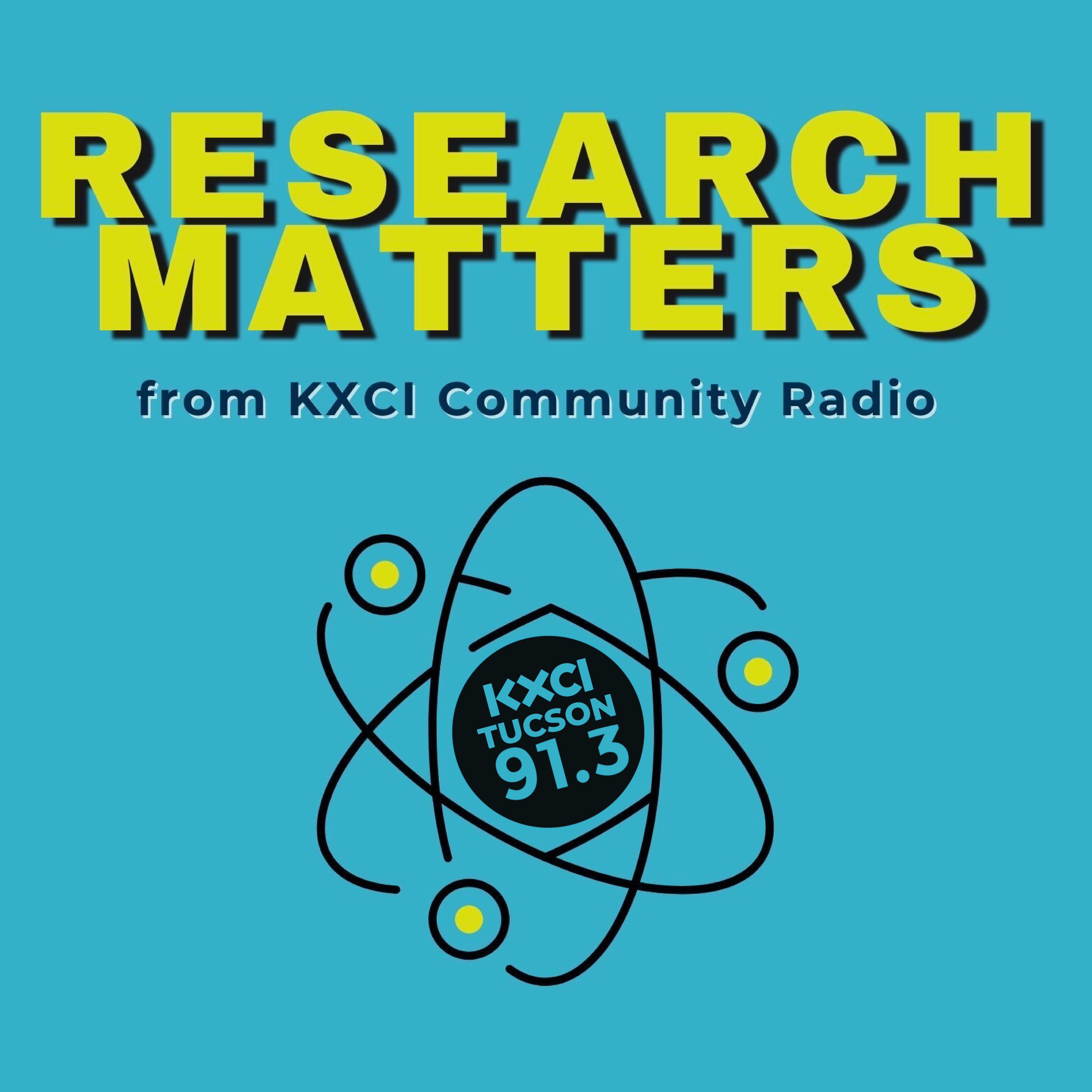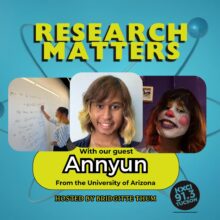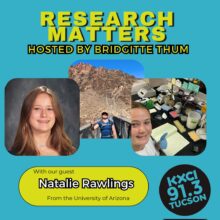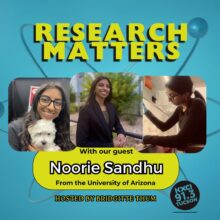“I am a PhD candidate in the physics department at the University of Arizona. I study quantum optics and quantum electrodynamics, which tell us how light at the quantum scale of photons interacts with matter (atoms and subatomic particles). Together with my advisor and other collaborators, I proposed the concept of quantum mirrors: mirrors that can both reflect light and not interact with light at all at the same time. Quantum mechanics tells us that even in a perfect vacuum, light can emerge out of nothingness. I want to study how quantum mirrors affect these spooky behaviours. In my free time, I enjoy reading poetry, novels, advocating and organising for trans and racial liberation, playing the guitar, and cooking. I can speak 5 languages!”
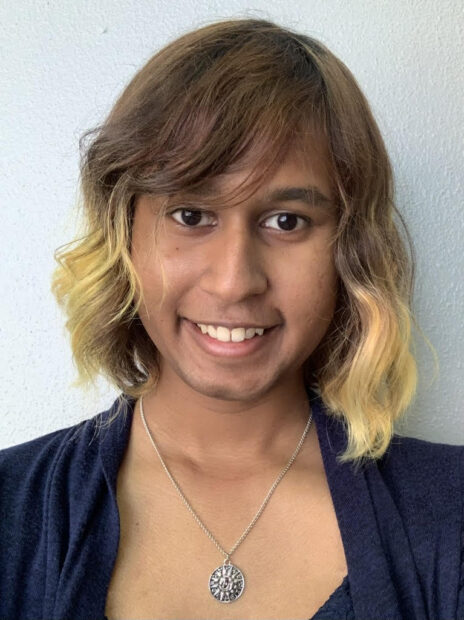
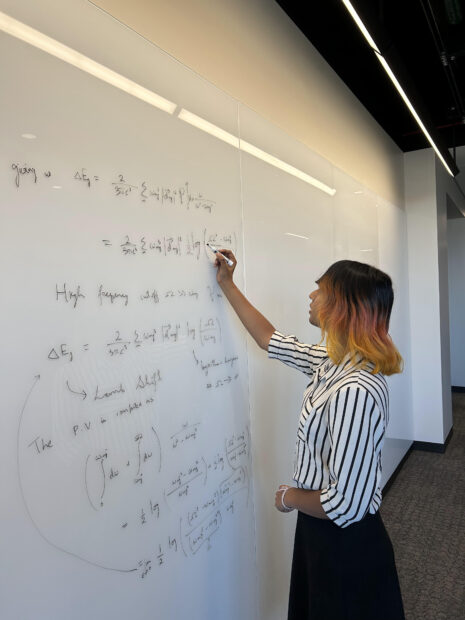
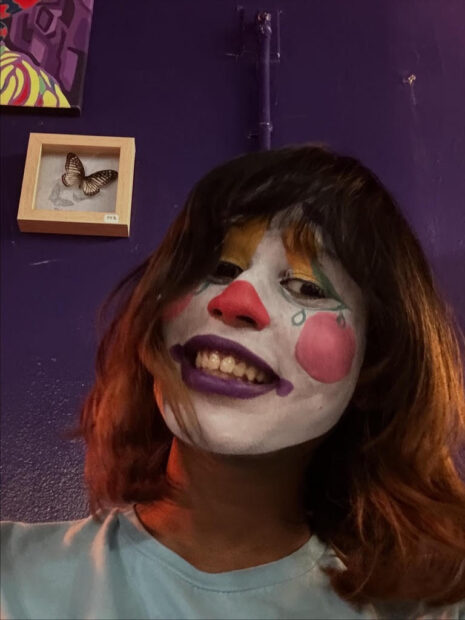
Transcript:
0:05: From KXCI Community Radio, this is Research Matters.
0:09: My name is Bridgitte Thum, and today from the University of Arizona we are welcoming physics PhD candidate studying quantum optics and electrodynamics.
0:18: Welcome to Research Matters, Annyun.
0:20: Thank you so much for having me.
0:22: Can you tell me a little bit about what you’re studying?
0:24: Together with my advisor and my other friends, I proposed the concept of a quantum.
0:30: Mirror, tell me more.
0:31: You may have heard of quantum behavior where an object can simultaneously be in multiple places at the same time.
0:39: Quantum mechanics tells us that an atom can exist in more than one state at once.
0:45: We use this quantum superposition of atoms to make a mirror.
0:50: In one quantum state, it can reflect light.
0:53: In another, it can transmit light.
0:55: At the same time, what’s the difference between reflecting light and transmitting light?
1:00: The way we understand reflection versus transmission currently is that when an atom reflects light, it will kind of absorb a photon and then emit it backwards, whereas if it’s transmitting light, it in a way almost doesn’t interact with the photon at all.
1:19: What is the practical application of a quantum mirror?
1:23: Now, we know our cell phone companies keep wanting to make things smaller and smaller, but if you try to keep making things smaller and smaller, at a certain scale, there are forces that come out.
1:34: This happens at about 100 nanometers or so.
1:38: There are these new kinds of forces that become relevant at these scales.
1:44: We call them fluctuation forces.
1:46: These forces are also present in milk and in geckos.
1:51: Geckos have these tiny hair on their feet that can create these forces, and that helps them climb walls.
1:59: But when we try to make things smaller in devices, they kind of become a hindrance.
2:05: And so we believe our idea of quantum mirrors can help to tailor these forces in a way that’s That’s useful and helps us miniaturize our devices more.
2:17: Personally, I am interested in exploring the physics because these forces are coming out of electric and magnetic fields that exist.
2:27: So electric and magnetic fields, when they give rise to light.
2:32: And such.
2:34: So now electric and magnetic fields depend on boundaries.
2:38: These boundaries we know are made up of atoms.
2:41: Atoms can exist in quantum superpositions, but weirdly enough, no one has actually studied how these quantum superpositions of atoms.
2:51: will affect these tiny forces that I was talking about.
2:54: So we wanted to do that.
2:56: I think it’s a very fundamental question and we want to study that.
3:00: Where can people find out and learn more about the theoretical quantum mirror?
3:04: We have a published paper on this topic.
3:07: It’s called Spontaneous emission in the Presence of Quantum Mirrors.
3:11: The first author is my advisor, Kun Sinha.
3:14: There are other collaborators including me.
3:17: You’ve been listening to Research Matters.
3:18: We’ve been talking about quantum mirrors with Annyun from the University of Arizona.
3:24: Annyun, this has been fascinating.
3:26: Thank you so much for talking with me today.
3:28: Yeah, thank you so much for having me.
3:32: Research Matters is produced in Tucson, Arizona at KXCI Community Radio, which is a listener supported radio station.
3:40: To hear more episodes, visit KXCI.org.
3:43: Thank you.

